babyproof: verb, transitive + intransitive
ba·by·proof \ˈbā-bē-ˌprüf\
: the act of making an environment or object safer for children. The act of babyproofing reduces risks to a level considered acceptable by a society, or, for example, to specific parents.
In my most recent book, Stuff Dutch Moms Like, I share a personal anecdote of attending a dinner party at an American friend’s home in Amsterdam. The dinner party consisted of a mix of Dutch and “expat” moms all living in the Netherlands. Over the course of the evening, the conversation inevitably turned to the subject of “babyproofing” as the home we were dining in was the stuff of nightmares for most American parents: open fireplace, 3 flights of treacherous stairs, multi-levelled floors with low railings and floor to ceiling windows that drop down to the canal lined street below. The Dutch women were aghast: “a babyproofer?! You actually pay someone to tell you what’s wrong with your own house?!” The transplanted foreigners were equally incredulous: “How could anyone with children possibly live here??! Don”t people die on Dutch stairs??” I stood in the middle of the two camps; understanding each side, yet knowing that the cultural divide on this topic was far too wide to breach. In retrospect, I shoulda just printed and handed out the below instructions and we could have all moved on, agreeing to disagree.
[sdpl-ad1]
Babyproofing the American way
- buy dream house
- decorate and furnish dream home
- get pregnant on ‘dangerously high’ California-king size mattress
- hire expensive baby proofer to tell you in details every single thing that is wrong with said dream house
- get pre-term contractions due to shock of discovering you live in an “extremely high-risk ‘red-alert’ environment”
- hire expensive baby proofer + even more expensive architect and builder to make “critical emergency modifications” to dream home
- rip down walls and re-level sunken-living room
- plaster over open fireplace
- apply tacky window decals to all sliding-glass doors and floor-to-ceiling windows which once showcased gorgeous view
- buy and install expensive rail guards, window guards, cabinet locks, radiator covers and electric socket plugs
- buy and install bump guards, edge guards and corner cushions for all furniture
- buy and install toilet locks, fridge lock and furniture straps
- bolt everything to the wall and/or floor
- buy baby gates, door gates and stair gates
- if your house now resembles a jail for tiny prisoners it means you are half-way there
- crawl around on hands and knees to effectively “get into baby’s environment” and spot missed “risk zones”
- add rubber padding to all walls and exposed surfaces
- remove superfluous furniture, accessories and home decor items
- heck, remove all furniture, accessories and home decor items; can live strategically positioned floor cushions and pillows alone
- dream house is now an (albeit empty) padded sanctuary and oasis of safety filled with only the best organic cotton cushions and floor pillows
- sit back, schedule your birth, and admire your fully ‘baby-proofed’ home. If you are stressed, fearful and exhausted it means you are living the American dream.
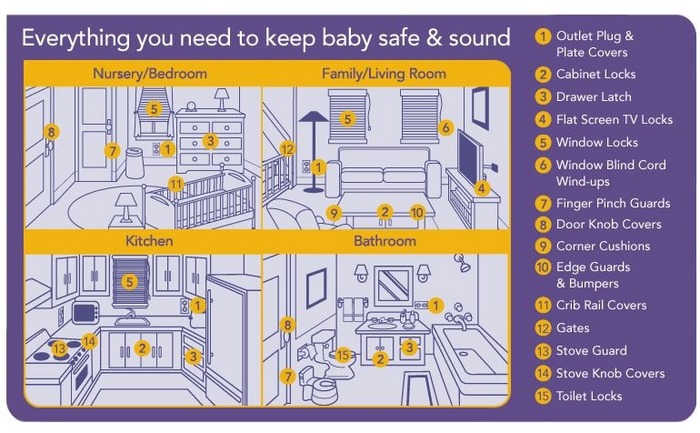
How to babyproof the Dutch way
- buy dream house surrounded by open water, containing multiple steep staircases, and windows that open onto at least a 1-storey straight-fall. Bonus points for: open fireplaces, roof terraces and piping hot radiators.
- get pregnant and buy wooden baby “box”
- give birth to baby in your living room
- put baby in “box”. the end.

The Dutch “baby box” (aka: wooden playpen)
Curious? Read more from author Colleen Geske on why Dutch moms are the happiest in the world!
[sdpl-ad5]
 Colleen Geske is the founder of Stuff Dutch People Like. She is originally from Canada and has called Amsterdam her home since 2004.
Colleen Geske is the founder of Stuff Dutch People Like. She is originally from Canada and has called Amsterdam her home since 2004.
Stuff Dutch Moms Like is her fourth book in the best-selling series.

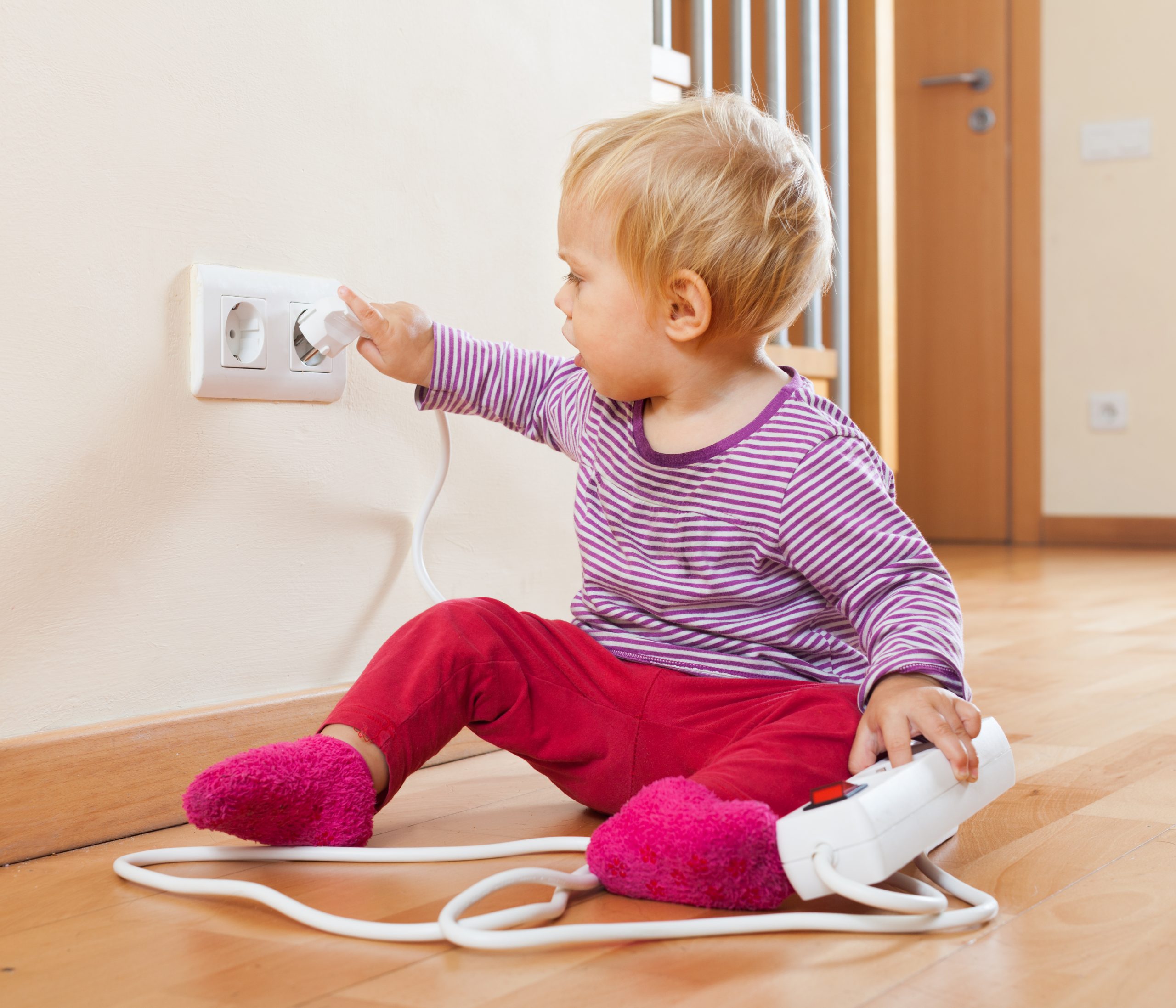




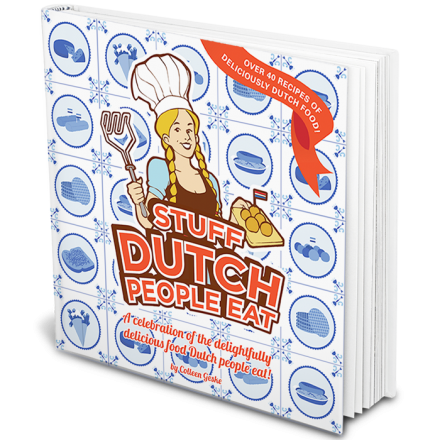
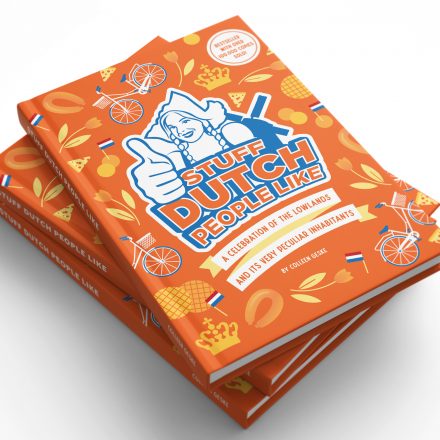
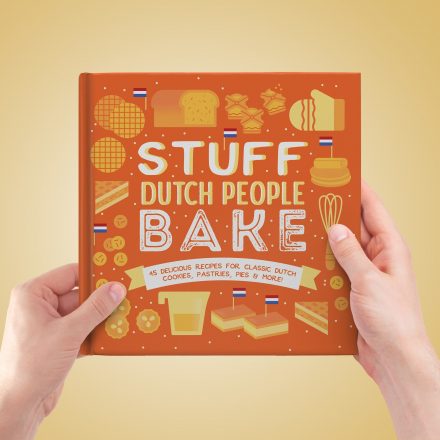

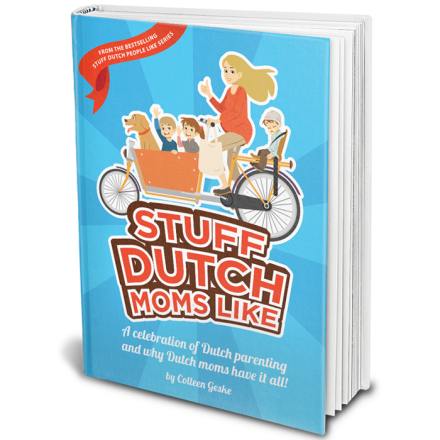
geweldig! zuperrrr.
I am a dutch child. When I was about 3 years old I said to my mom: “if you hold yourself tight I cannot fall”. This was very true. especially when you ar climbing over the attic stairs. which was exactly what I was doing at that time. Thank you, mom, for your confidence.
And when the kids have outgrown the playpen it’s simply a matter of keeping an eye on them. Well, that and keeping detergents etc. out of reach. It’s not that complicated, really 😉
Wooden play pens are the best! After your children have outgrown them, you throw the dangerous stuff into them thus making the house safe again ?
As a maternity practitioner I work for a lot of different nationalities… found this article really funny and true?
I raised my three kids in Montana and used a play pen. Made and bought in the USA. My Dutch mom on the other hand raised me and my brother in the Netherlands WITHOUT a baby box. She just kept her eye on us, and we survived. What’s your point?
Humor?
Yes.
haha…..ik weet wel welke moeder het minst gestressed is. Maar het is zo waar.
the only difference is that Americans are proofing baby from the house, and Dutchies are proofing house from the baby 😀
I come from another culture but live in Netherlands. When we got our first baby I did go to IKEA (my culture) to buy gates for stairs, cupboard closing mechanisms etc… We did not get a box because it does delay baby starting crawling and is again ‘not my culture’. We allowed the baby to play on the floor and Dutch friends were asking if I am not ‘worried that someone will step on the baby’. Hmph. She has now reached the age of 5 without being stepped on so I guess living without the box is fine. When second baby came around we did not even bother with gates etc. We keep an eye on him and have eliminated all really dangerous stuff (like cleaning detergents) from his reach.
The play pen stimulates sitting-ups and standing-ups and climbing-ups, their proud first steps on their own. For many babies it is their refuge.
And of course it is not only in the bed or in the pen. Pen-babies play and crawl outside the pen too.
Barely used our play pen. When they started crawling, followed them around for a day, removed anything that caused me to have a near heart-attack. Did it again when they started walking. And yes, they did get their fingers caught in a drawer: it hurt, i kissed it, we moved on.
As a Grantie to several children, I’m confused by the current practice of an adult following toddlers around the house while they freely roam around getting into everything. Infants need to be the complete focus of their caregiver in order to thrive, toddlers can gently start to learn that the world does not revolve around them and that there is play time where all eyes are on them, and other time when they have to amuse themselves for a while in a safe spot…so much less stressful for Mommy.
We’re fans of the playpen too and for grandson we have a great 1.2 meter circular one. Plenty big enough to crawl and now walk around holding the bars. My daughter bought one the same. On a farm, house floors tend to be a bit grubbier especially with an alsation the size of a small pony. Next year our little man will probably climb out of it and then we’ll pack it away awaiting the next grandchild! We have another playpen in the barn for when we’re working there. At least he would be run over by a forklift or tractor. Certainly more cost efficient compared to having someone follow him around.
One small error: the baby box must be situated outside – in every kind of weather – for “fresh” air. hahaha
Things are a bit more complicated than Colleen describes, although I am sure she has a point. The box is useful in the first year or so of babyhood. After that, babies will protest if you confine them to the box, but they want to discover their surroundings. At that point, we did do some baby proofing, such as socket plugs and stair gates.
It is soooooooo true!!! What happened to all these North American moms who seem to have barely a clue on how to raise/protect or discipline their kids?! The Dutch are the best! And I should know as I’m one of them and know we have so much more common sense than North Americans.
Babies protesting??? Well, who is in charge of whom???? Go figure!!
I’m an American mom, now Grandma. I agree ? % with you!! These STUPID parents letting the children tell them what THEY are going to do infuriates me!! ?
I watched my kids like a hawk. The playpen was a great and safe place for my children so I could get some daily chores done. Today’s dingy parents don’t watch them and just sit them in front of a tv or some sort of computer. Kids barely go and play outside. I read an article about how they are stunting their growth by NOT pretending or entertaining themselves WITHOUT ALWAYS being on an IPad or tv.
Sad state of affairs to me
I can’t think of anyone who has babyproofed their home “the American way”. Those examples are way overboard and unrealistic. Most use common sense approaches. I spent my first five years being raised in Holland and was burnt by an unguarded stove in the living room, my brother fell in the canal and almost drowned, burned myself badly by pulling a pan off the stove, and my mother had a terrible accident with two of us on her bike …. no helmets or safety gear!
BAHAHAHAHA inderdaad!
Moet hier erg om lachen. Hieruit kun je erg op maken dat wij Nederlanders erg nuchter zijn. En de box is erg handig,ik heb hem ook gebruikt toen zijn zoontje klein was. En ik weet zeker dat mijn moeder ,die 3 kinderen heeft groot gebracht zich zeker niet zo druk gemaakt heeft. En wat betreft schoonmaak middelen ,wasmiddelen medicijnen, mij is geleerd alles hoog op te bergen in de keuken de schoonmaak middelen,bij de wasmachine de wasmiddelen,en medicijnen,ja die staan nog steeds in het hoogte kastje. Mijn zoon is 20,heeft dus net als ik en mijn man alles overleeft. ??
I’m a Dutch mum living in Ireland with an American partner and yes, I do have a playpen and I also let my toddler play on the ground where we sit. I use the playpen for safety and comes very handy when you’re alone and you have to run upstairs or to the door. I agree that baby’s develop much better outside the box. I loved the story, very funny….so many differences in culture.
My Father in law placed a safety lock (child proof) on one of the doors.
After installing in my son (2 years old) was able to open in within one try..
End of toddler proofing 🙂
Another reason to keep the “play pen (prison box)”, purposely kept unknown to the Dutch, is to prepare our young ones from their very conception for a lifetime of accepting boundaries set by external powers. As long as you stay in the box, you will not be harmed. The children that accept the boundaries of the box as their reality, end up being one of the happiest people in the world, which their trusted researches can measure objectively. “Don’t worry about how you feel, we will tell you how happy you are: according your GDP per capita, and absence of corruption in your country, you score a 7.5 on the happiness scale. So ignore your feelings and just remember, everybody’s awesome!”
The prison box is also the perfect tool to prepare our kin for a lifetime of yearning: see the world, but can’t touch. Obey, and get a reward. Keep yearning for that dream house , so the economic engine keeps roaring, or step out of the box, burn your hand to the fire, hit your head against the drawer and get hurt falling in love.
That’s really depressing dude..
Wow, not sure a baby up to 12 months can quite grasp that yet 😉 but interesting
Lovely article!
It must be my son’s half English side but we can not keep him in the box. He wants to crawl around and play with the doors.
why compare everything to the USA? r the dutch that insecure?
To show the extremes
Funny !!!! I love your observations.
Greetje
Awww that’s so funny.
Especially in old times, it was common to just open up drawers of cabinets and let the babies sleep in there. Sometimes while opened, and sometimes just barely opened, so that they could breathe, but also slept in the dark.
Especially if you had many children, that was how you took care of all of them. The babies slept in the cabinets.
Just a few times NO, No, NO was enough. You only have to put the expensive things a level higher.
There are 2 reasons for the dutch way
1. We are lazy, why go through all the trouble while you can buy a baby box and fill it with toys?
2. We don’t lije wasting our money
A good old fashioned slap on the bottom does wonders too.